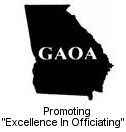Sarbanes-Oxley Act of 2002
"Its best to comply than to pretend to be unaware"
1. The Sarbanes-Oxley Act of 2002 was passed by Congress in order to improve the
standards of corporate governance following several scandals on the corporate scene.
2. Sarbanes-Oxley can be described as the United States Government's attempt to bring honesty, clarity, and speed to corporate financial reporting, requiring overhauls of budgeting, reporting, and decision-support systems.
3. Ten basic governance principals associated with the Sarbanes-Oxley Act include:
(a) The board of directors must participate in independent, active, and informed oversight of the organizations activities.
(i) In such a manner to assure effective and ethical management.
(ii) Determine optimal size, composition, and operating procedures of the board that will assist it in fulfilling its oversight responsibilities.
(iii) Evaluate independence of board members - what factors could adversely affect board and board member objectivity.
(b) Directors who hold analysis and information in connection with the oversight and decision-making responsibilities of the board are obligated to disclose that information to the board.
(c) Nominating/governance committees, composed of directors not directly involved with the management team, should be utilized.
(i) Focus on core governance and board composition issues.
(ii) Help set the tone of corporate governance, including recommendations for corporate governance policies and reviewing the board's and the organization's governance structure and documents.
(d) A procedure should be adopted whereby performance of the board and each board committee are annually evaluated. The board should also enact a review/evaluation process for the chief executive officer on an annual basis.
(e) The board of directors is responsible for overseeing corporate ethics and should consider the following:
(i) Adopting a conflict of interest policy.
(ii) Adopting ethics-related criteria in employee qualifications and reviews.
(f) Organizations should be annually audited by an independent auditing firm.
(i) Consider establishing an audit committee with responsibility for overseeing selection and work of the auditors and reviewing draft financial statements.
(ii) Purpose is to assure financial integrity of the organization.
(g) The chief executive officer and the chief financial officer should review Form 990 and any other annual information returns filed with state and federal agencies. An officer must sign the Form 990 certifying that to the best of his/her knowledge and belief, the information contained therein is true and correct. In 2009, the IRS Form 990 was redesigned to focus on the following principles:
(i) Enhancing transparency to provide the IRS and the public with a realistic picture of nonprofit organizations; and
(ii) Promote compliance by accurately reflecting nonprofit organizations operations so the IRS may efficiently assess the risk of noncompliance.
(h) Attorney's providing legal services to organizations who learn of evidence indicating material breaches of fiduciary duty or other violations should report evidence to the chief executive officer and then to the board of directors.
(i) Organizations should develop a written policy which sets forth standards for document destruction, retention, and integrity.
(j) Organizations should develop a written policy which allows and promotes employees to alert managers and the board of directors to potential violations of law and ethical issues, including possible financial, accounting or other legal violations.
4. The Sarbanes-Oxley Act has no actual effect on nonprofit organizations, other than requirements for adoption of document destruction/retention and whistleblower policies. It is becoming apparent, as time passes and the Act is interpreted and implemented, that its purpose and concepts will likely be applied to nonprofit organizations and are being viewed as "best practices" to be adopted by nonprofit organizations. Consistent with the concepts outlined above, the focus is on accountability, transparency, independence and fiduciary duty.
2. Sarbanes-Oxley can be described as the United States Government's attempt to bring honesty, clarity, and speed to corporate financial reporting, requiring overhauls of budgeting, reporting, and decision-support systems.
3. Ten basic governance principals associated with the Sarbanes-Oxley Act include:
(a) The board of directors must participate in independent, active, and informed oversight of the organizations activities.
(i) In such a manner to assure effective and ethical management.
(ii) Determine optimal size, composition, and operating procedures of the board that will assist it in fulfilling its oversight responsibilities.
(iii) Evaluate independence of board members - what factors could adversely affect board and board member objectivity.
(b) Directors who hold analysis and information in connection with the oversight and decision-making responsibilities of the board are obligated to disclose that information to the board.
(c) Nominating/governance committees, composed of directors not directly involved with the management team, should be utilized.
(i) Focus on core governance and board composition issues.
(ii) Help set the tone of corporate governance, including recommendations for corporate governance policies and reviewing the board's and the organization's governance structure and documents.
(d) A procedure should be adopted whereby performance of the board and each board committee are annually evaluated. The board should also enact a review/evaluation process for the chief executive officer on an annual basis.
(e) The board of directors is responsible for overseeing corporate ethics and should consider the following:
(i) Adopting a conflict of interest policy.
(ii) Adopting ethics-related criteria in employee qualifications and reviews.
(f) Organizations should be annually audited by an independent auditing firm.
(i) Consider establishing an audit committee with responsibility for overseeing selection and work of the auditors and reviewing draft financial statements.
(ii) Purpose is to assure financial integrity of the organization.
(g) The chief executive officer and the chief financial officer should review Form 990 and any other annual information returns filed with state and federal agencies. An officer must sign the Form 990 certifying that to the best of his/her knowledge and belief, the information contained therein is true and correct. In 2009, the IRS Form 990 was redesigned to focus on the following principles:
(i) Enhancing transparency to provide the IRS and the public with a realistic picture of nonprofit organizations; and
(ii) Promote compliance by accurately reflecting nonprofit organizations operations so the IRS may efficiently assess the risk of noncompliance.
(h) Attorney's providing legal services to organizations who learn of evidence indicating material breaches of fiduciary duty or other violations should report evidence to the chief executive officer and then to the board of directors.
(i) Organizations should develop a written policy which sets forth standards for document destruction, retention, and integrity.
(j) Organizations should develop a written policy which allows and promotes employees to alert managers and the board of directors to potential violations of law and ethical issues, including possible financial, accounting or other legal violations.
4. The Sarbanes-Oxley Act has no actual effect on nonprofit organizations, other than requirements for adoption of document destruction/retention and whistleblower policies. It is becoming apparent, as time passes and the Act is interpreted and implemented, that its purpose and concepts will likely be applied to nonprofit organizations and are being viewed as "best practices" to be adopted by nonprofit organizations. Consistent with the concepts outlined above, the focus is on accountability, transparency, independence and fiduciary duty.



